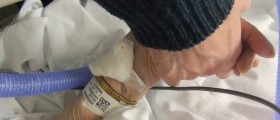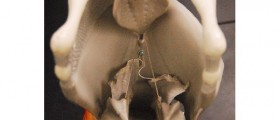
Dying and Life Expectancy
The hardest part of each unsuccessful treatment is the dying. This always comes as a last resort, when nothing more can be done medically. However, often, doctors tend to misdiagnose this phenomenon. Namely, they say that a person has several days left, and he or she manages to live for a year without any problems. Every individual is different. Thus, this grim diagnosis is not always absolutely precise. Doctors are taught to perceive certain signs of upcoming death and, thereby, announce the sad prognosis. Sometimes these symptoms may not be so fatal and the patient may recover completely. Unfortunately, many times, the doctors are right. Therefore, read on and find out what the doctors look for when noticing signs of imminent death.
Signs of Possible Death in Patients
Dying itself has two phases. The first one is called the pre-active phase of dying while the second is named the active phase of dying. The former lasts for several weeks before the onset of the latter which lasts for two or three days before actual death takes place. However, again, this may vary from one patient to another since doctors rely greatly upon blood pressure, perceiving lower blood pressure and breathing difficulties as the main signs. Regardless, people can recover completely or live significantly longer than they were predicted beforehand.
One of the first signs is restlessness and confusion. Namely, the patient will desire to change positions often, feeling uncomfortable and agitated each time. Sleeping increases, along with lethargy and lack of social interaction. Breathing pauses and a noticeable decrease in water, fluid and food intake serve as one of the symptoms as well.
Dying patients usually feel this, often claiming to have visions of their dead family members. Also, they desire to settle some unsettled things in their lives.
Finally, in the end of their pre-active phase of dying, their wounds or infections will cease to heal or recover and swellings will appear on many parts of their bodies.
As the active death phase starts, the symptoms get more severe. Along with breathing pauses and inability to move due to the state of coma or semi-coma, the patient is likely to change his or her behavior beyond recognition. Moreover, breathing becomes very unnatural, with abrupt changes from one extreme to the other.
Fluid in lungs may appear, while, at the same time the patient will not eat nor take fluids on his/her own. The patient may claim that he or she is dying as well. Uncontrollable, strange-colored urination, serious blood pressure decrease and coldness of the patient’s arms and legs can, and usually are also present. Finally, the patient’s limbs get discolored, turning blue or purple and his body lacks movement. After this, death is likely to occur. Nevertheless, the patient is able to hear even if he or she does not respond. Thus, people close to this person should provide support and comfort.

















Your thoughts on this
Loading...